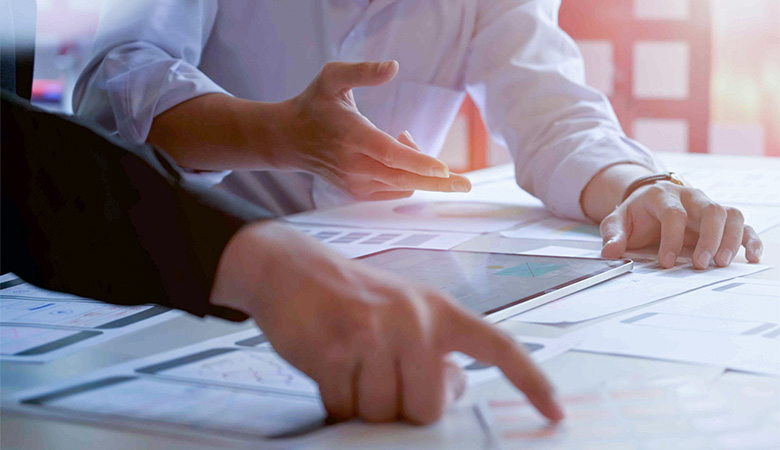Management / Articles
6 essential Quality KPIs (and how to improve them)
These are 6 essential quality KPIs every company should track, how to measure them, and what to do to improve them.

 8 minutes of reading
8 minutes of reading
2023-03-09 19:11:48
Measuring critical quality KPIs can be challenging, but it is a necessary first step to bolster continuous improvement efforts and achieve the elusive goal that is operational excellence. Here are 6 KPIs that every organization should track – and what to do to improve them.
1. Rejection rate
This quality KPI measures the percentage of products that are rejected during the production process due to quality issues. Rejection rate is calculated by dividing the number of rejected products by the total output. Among the most common causes of rejection in the food business are failures to ensure shelf life and differences in expected size, color, and taste. Packaging problems, such as the availability of the right size for each product, are also common. Identifying the main causes for each product family is the first step to eliminate them.
2. Product return rate
Product return rate measures the percentage of sold items that are later returned by customers. Although similar to the previous quality KPI, returns are far more serious, because problems are detected by customers – a testament to poor internal controls. This quality indicator can be measured by dividing the number of returned products in a period of time after the sale, by the total amount sold. To improve the rate of product returns, it is important to understand the reasons for customer returns, identify the root causes, and define improvement actions. Some of the main causes for returns in the food industry are late deliveries, expired dates, mismatch between product and description, and shipping incorrect or damaged products.
3. Unplanned downtime
Unplanned downtime designates the periods in which production is stopped without prior planning of at least 24 hours. This quality indicator can be measured by summing the time a machine has been running at substandard speeds, experienced breaks, or unplanned maintenance stops during the length of a shift. Knowing this metric is important for assessing quality and maintenance costs.
One way to decrease unplanned downtime is through the 5S methodology, which allows you to optimize workstations to make the most used tools readily available. Thus, it is possible to ensure basic stability in the stations, detect problems faster, and even speed up interventions in case there are failures. Predictive maintenance, which anticipates interventions on equipment to prevent failures before they occur, also helps reduce the frequency and severity of unscheduled downtime. In addition, preparing employees to solve simple problems will reduce downtime in an area.
4. Cycle time
Cycle time answers the question: how frequently should a unit of a certain product be produced? For example, if a shift must produce 1000 units in 8 hours, the cycle time is approximately 2 minutes. This means that every 2 minutes a unit should come out with “good” quality. Achieve this target and you will be meeting demand. Fail to do so and risk missing deliveries.
This is a KPI for both quality and productivity, as it helps to set realistic goals and identify friction in the production process. Cycle time can be reduced (i.e., improved) by mapping out key processes, training employees, and upgrading machinery and equipment.
5. Stock coverage
Stock coverage refers to the number of days the company can operate without receiving further orders from its suppliers. For instance, a 8 days of stock mean that the company can work during this time only with what it already has in-house, at an average pace. It is recommended to have a minimum coverage level of a few days to deal with possible delivery failures. After a certain point, however, excess stock becomes a problem.
High stock levels – in raw materials, work in progress, or finished goods – are a defense against inefficiencies and failures in the production process. They are also a possible competitive constraint: a company with 16 days of stock coverage has more capital tied up in stock than another with just 8 days of stock, a sign of lack of efficiency and also of quality. That capital could be almost certainly be put to better use elsewhere.
On the other hand, high stock coverage can lead to new quality problems as materials deteriorate – such as breakdowns, obsolete and expired products. Stock coverage can be optimized by better forecasting requirements, improving internal processes to shorten production lead times, and by producing according to actual customer needs, rather than forecasts.
6. Net Promoter Score
Measuring process KPI is important but to know what customers really think, you can just ask. The Net Promoter Score, or NPS, is one of the most effective indicators for measuring customer experience. It all starts with a question: How likely are you to recommend the company to a friend or colleague? The answers are given on a scale of 0 to 10 and grouped as follows:
Promoters (score of 9 to 10) are loyal enthusiasts who will continue to buy and recommend others, fueling growth.
Passives (score of 7 to 8) are satisfied but unenthusiastic customers who are vulnerable to competitors’ offerings.
Detractors (score of 0 to 6) are dissatisfied customers who can damage the brand and prevent a company from growing.
Subtracting the percentage of Detractors from that of Promoters produces the Net Promoter Score, which can range from a minimum of -100 (if every customer is a Detractor) to a maximum of 100 (if every customer is a Promoter).
This quality KPi is important to know if customers would repeat the purchase or recommend the product, obviously essential for the success of every business. The best way to calculate it is to go directly to the source by doing a good survey among current customers. For example, you could send an automatic email after each product delivery.
MultiWasher, the machine keeps on improving
To promote efficient quality management, companies must rely on quality indicators to better understand the current state, predict failures, and make informed decisions.
Investing in quality also requires the most effective and efficient equipment. In the specific case of industrial washing, food companies can achieve those results with the MultiWasher. This state-of-the-art machine can sanitize any type of utensil, with sustainable consumption of water, detergent, and energy. See the MultiWasher in action for yourself to know how it can elevate the quality of your washing processes.
You may also like

Management / Articles
Sweet disposition: the importance of an efficient layout
The design of a business layout seeks to optimize the disposition of people and materials, ensure the efficiency of operations and avoid accident...
Posted in 2021-11-04

Management / Articles
FMEA analysis: what it is, what it’s for and how to implement
FMEA analysis allows companies to detect critical failures before they happen. But what is it exactly and what are the major benefits for your or...
Posted in 2022-04-21

Management / Articles
DMAIC: what it is, what it is for, and how to use it
Reduce waste, solve problems, and improve processes. Learn about the DMAIC method and find out how to implement it in practice.
Posted in 2023-03-30






















 Portugal
Portugal United Kingdom
United Kingdom United States
United States France
France Spain
Spain Germany
Germany Romania
Romania Italy
Italy Czech Republic
Czech Republic Finland
Finland Hungary
Hungary Slovakia
Slovakia Greece
Greece Lithuania
Lithuania South Korea
South Korea Russia
Russia Saudi Arabia
Saudi Arabia Poland
Poland Brasil
Brasil Hebrew
Hebrew